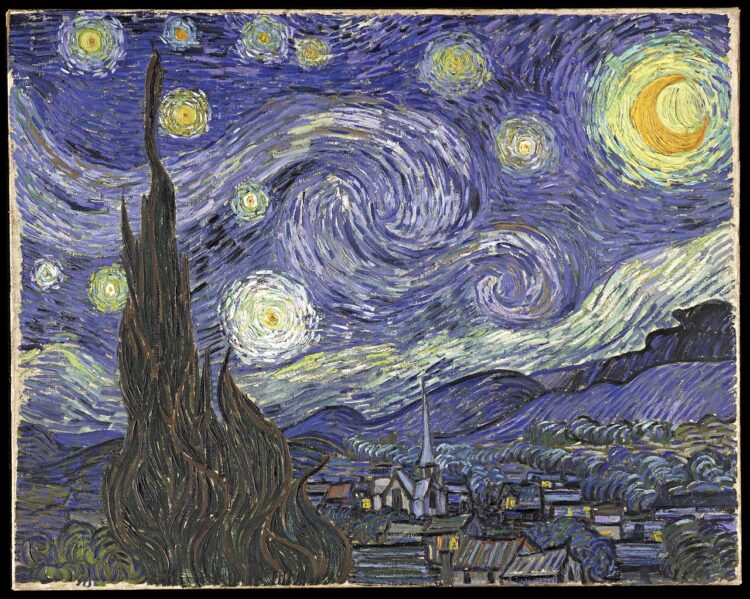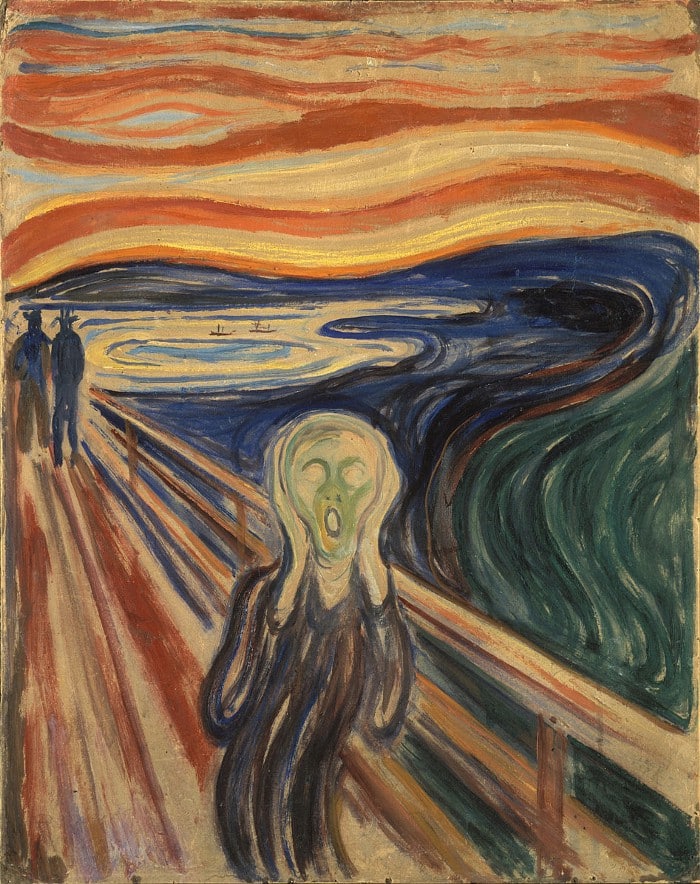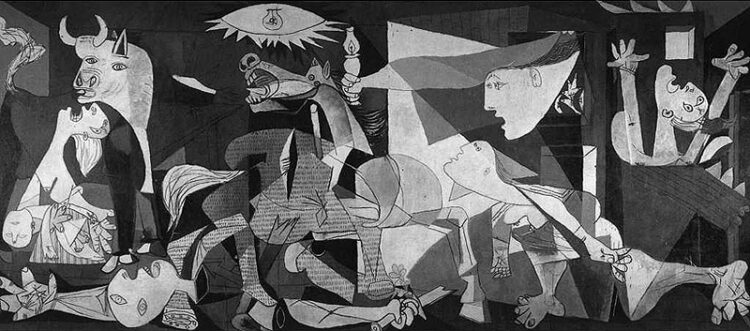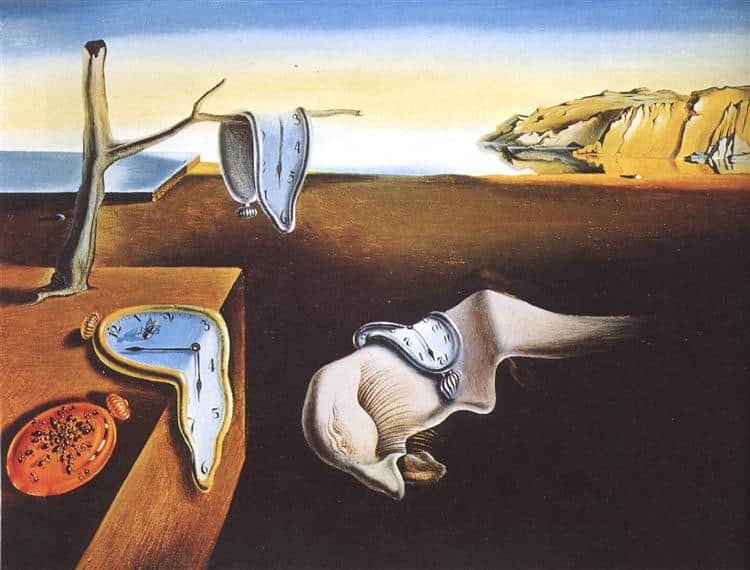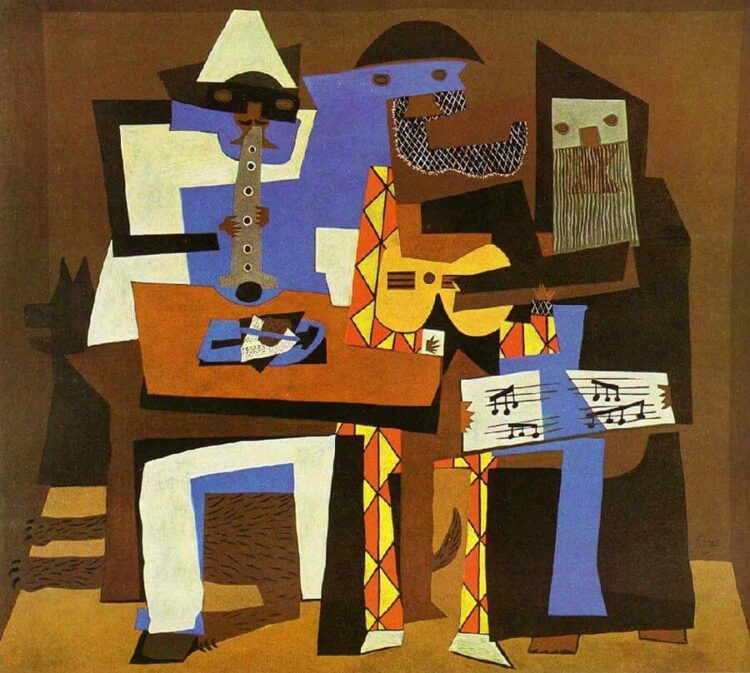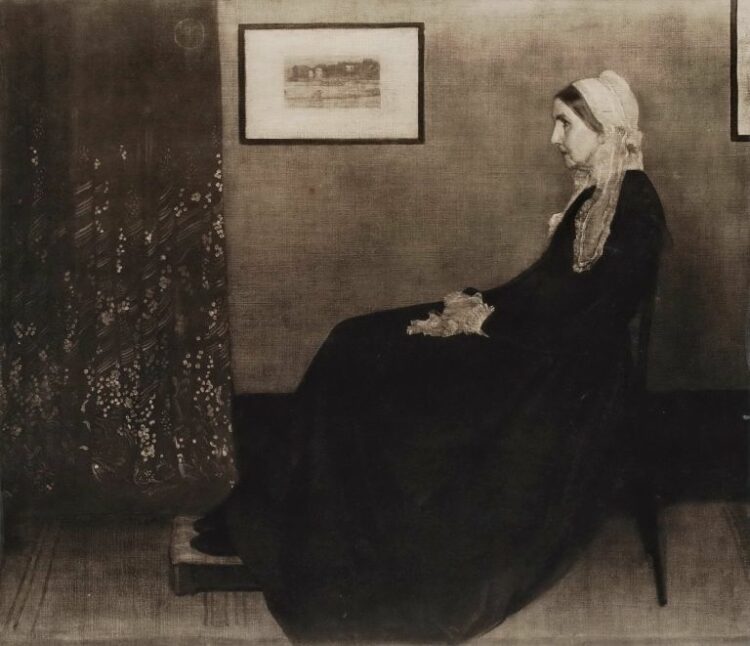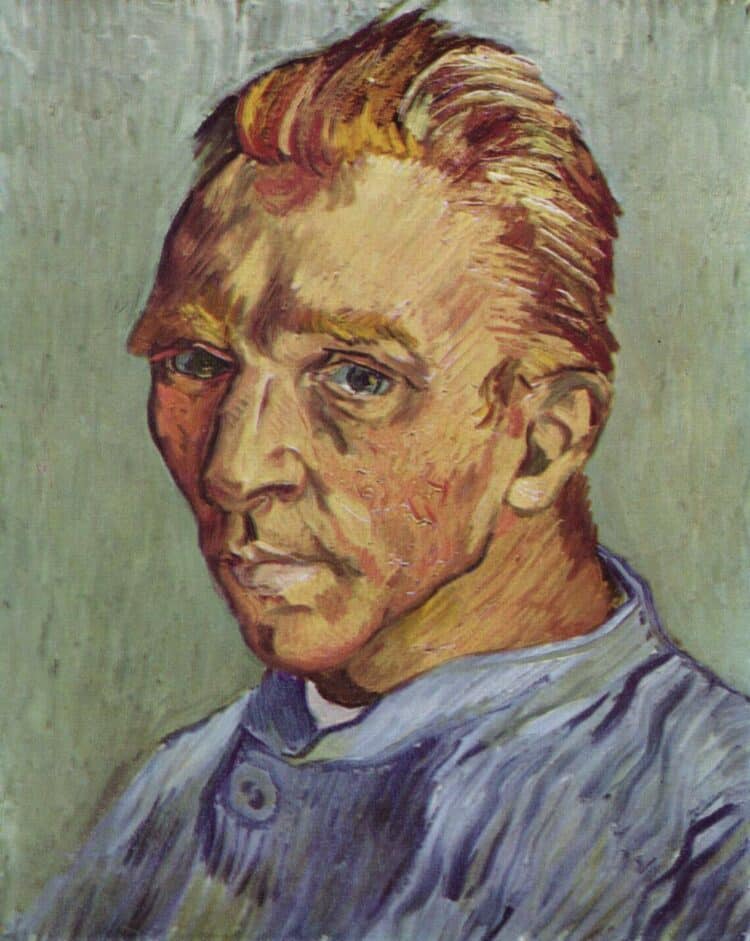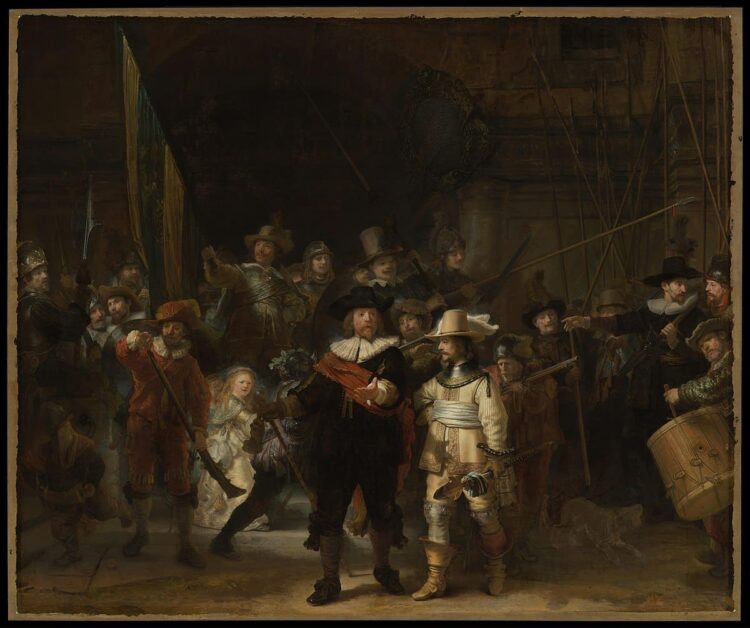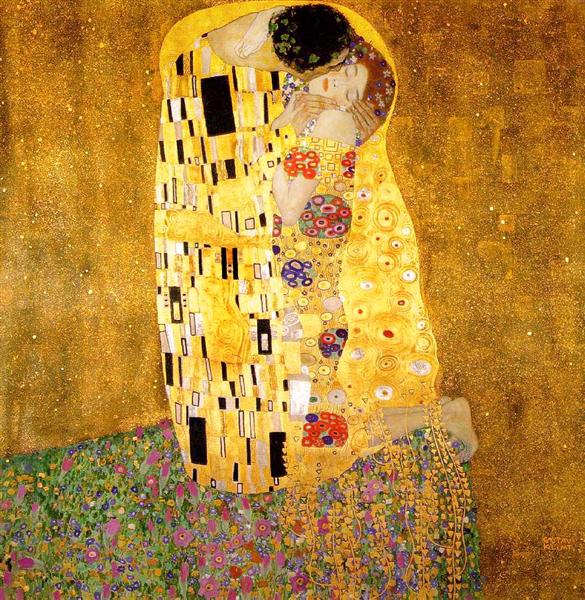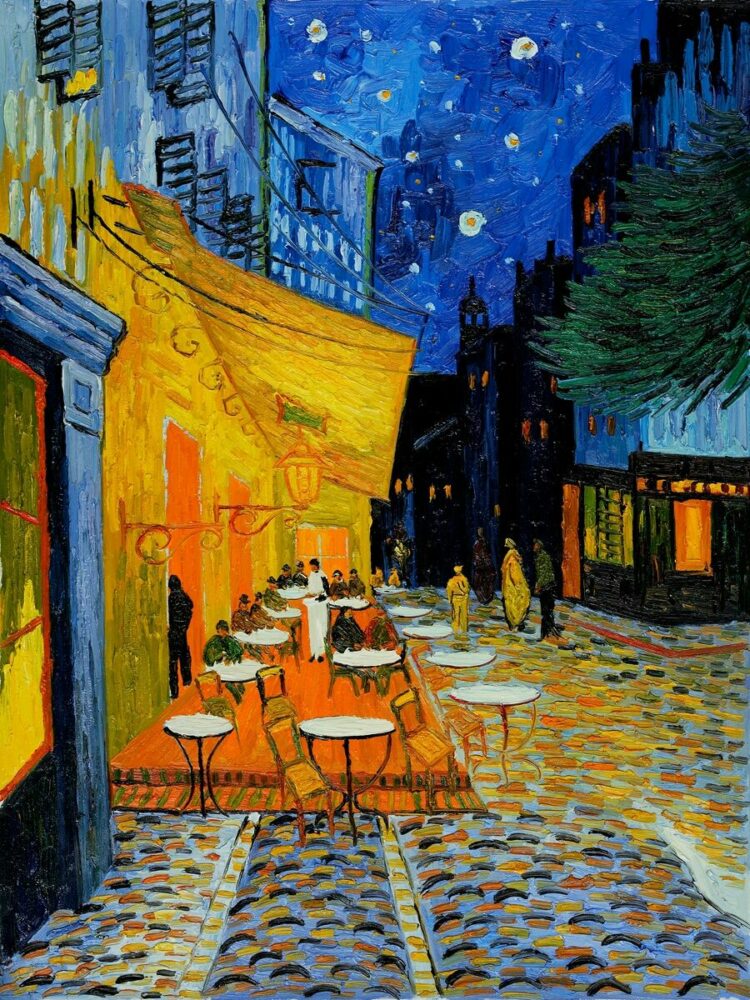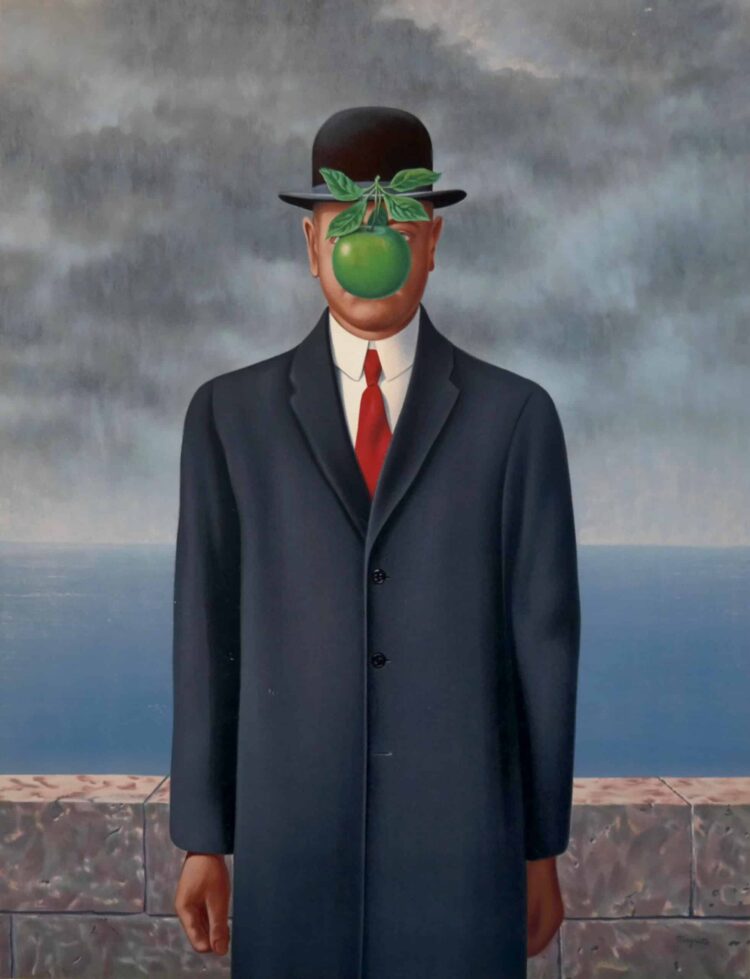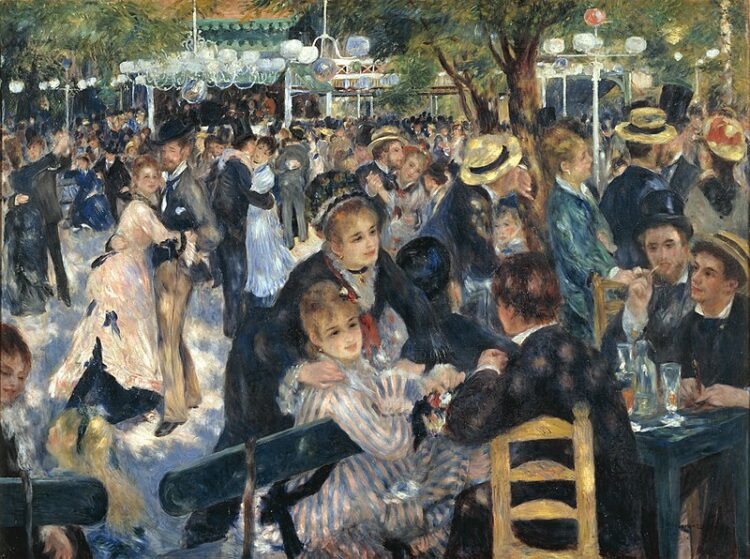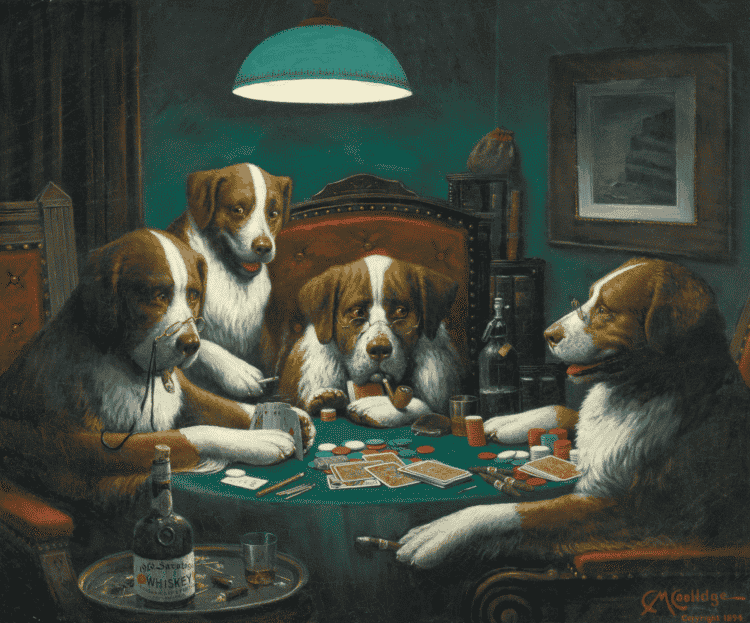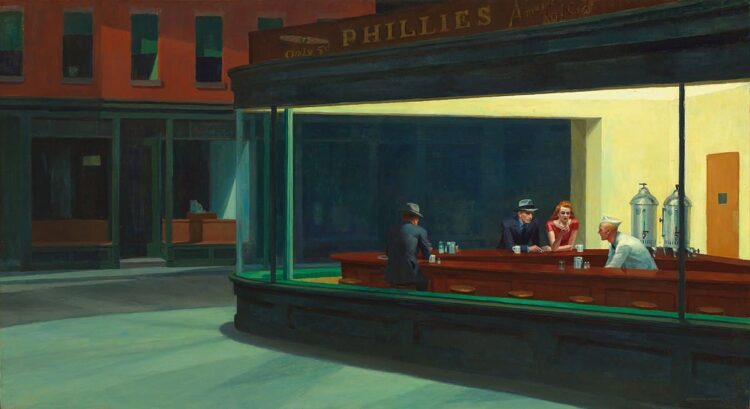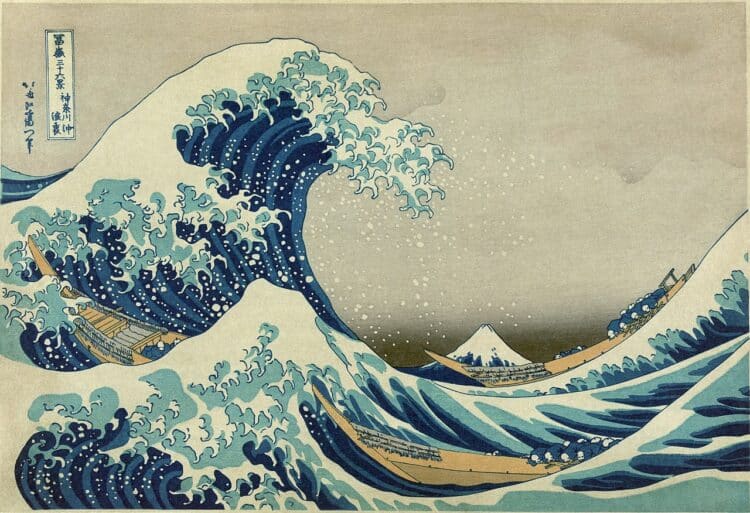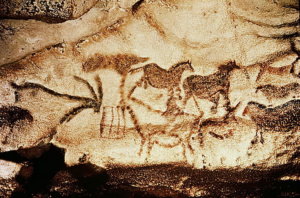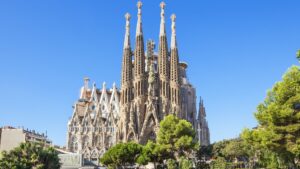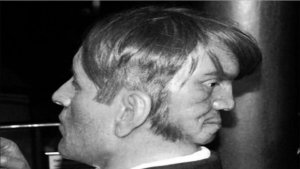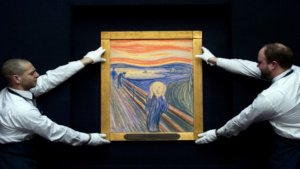When you think of the most famous paintings, which paintings come to mind? The aim of our patch, the most famous paintings in the history of art, is to bring you these famous paintings, which differ from the understanding of art before it, and which are a turning point for the future.
They all have long, long stories. We also briefly touched upon the relations of the paintings with their creators. While some of them were created with brand new methods with an understanding beyond their age, some of them reflected the darkest and most mysterious sides of the human subconscious on a canvas. Here is our article about these famous paintings that will take you to other places and make you wonder how, why and when they drew them.
Most Famous Paintings
1) Mona Lisa – Leonardo da Vinci
The first piece of our list of the most famous paintings is the Mona Lisa, which everyone from 7 to 70 knows. Leonardo da Vinci , who has many titles such as painter, architect, mathematician, is estimated to have painted the Mona Lisa between 1503-1507. Although the woman in the painting is assumed to be da Vinci’s wife, Lisa Gherardini, the painter kept the portrait for a long time.
After the death of the painter, the French King François I bought the painting. The Mona Lisa was stolen from the Louvre in 1911 but was discovered hours later. Perhaps the biggest robbery in history took place and the painting became an icon unless the thief was found.
The thief, Honore Gery, was caught selling several Louvre statuettes to a journalist. The thief said he gave his bag full of artifacts to Pablo Picasso. Picasso also joined the Mona Lisa suspects, but denied that he had the painting. Then the case was closed, and after two years it was understood that the painting was in the possession of an Italian named Vincenzo Perugia. The thief stole the painting not to sell it, but because he thought it belonged to Italy with nationalistic feelings.
If you want to see the Mona Lisa, you can visit it in the Louvre Museum in France.
2) The Starry Night – Vincent van Gogh
The Starry Night painting by the famous Dutch painter Vincent Van Gogh in 1889 is among the most famous paintings. Van Gogh, who stayed in a mental hospital in France due to his mental problems, continued his work during this period. The starry night painting emerged with the drawing of the view he saw from the window of the mental hospital where he stayed. Gogh transferred The Starry Night painting, which is thought to have a night view, to his canvas during the daytime, and it turned out to be one of the most beautiful paintings in the world.
The Starry Night has been on display at the Museum of Modern Art in New York since 1941.
3) The Scream – Edvard Munch
The Scream is Norwegian artist Edvard Munch’s expressionist painting that shows a suffering figure against a blood-red sky. The view in the background is the Oslofjord viewed from a hill in Oslo. Edvard Munch produced several versions of The Scream. Two of these are paintings, one belonging to the National Gallery in Oslo and the other to the Munch Museum. Munch later named the series ‘Frieze of Life’ and described these paintings as a poem of love, life and death.
The Scream is based on an experience Munch had while walking with two friends in Ekebergåsen on the outskirts of Christiania.
“I was walking with two of my friends, the sun was setting. Suddenly the sky turned blood red, I stopped, felt exhausted, and leaned against the fence. There were tongues of blood and fire over the blue-black fjord and the city. My friends kept walking and I stood there trembling with fear and felt an endless scream running through nature…”
4) Guernica – Pablo Picasso
One of Pablo Picasso’s most sublime works, Guernica tells the pathetic story of the bombing of the town of the same name. It is depicted in the Basque town of Guernica during the Spanish Civil War as a sudden reaction to the Nazis’ indiscriminate bombing of the city.
Painted in 1937, Guernica is considered one of the greatest and most powerful anti-war artworks of all time. Picasso’s masterpiece is on display at the Museo Reina Sofia in Madrid. A copy of the famous work can be found hanging at the United Nations Headquarters in New York.
5) The Persistence of Memory – Salvador Dali
Salvador Dalí’s masterpiece, The Persistence of Memory, which he brought to the canvas in 1931, is a well-known symbol of surrealism with its strange subject and dreamlike atmosphere, and is also among the most famous paintings. Salvador Dalí , an important representative of Surrealism, goes deep into this artistic mentality, which he sees as revolutionary and liberating, and explains his approach to art as “Surrealism is destructive”.
Developed by the artist in 1930, the technique relies on self-induced paranoia and hallucinations to facilitate a work of art. In order to contextualize the iconic piece’s place in art history, it is necessary to understand its unique influences, examine its symbolic content, and grasp the artist’s avant-garde approach to his creation.
Dali’s reading and assimilation of Freud’s unconscious theories points to the unconscious desires and paranoia of the human mind, such as the fear of death, which this picture shows. This painting, which is slightly larger than a notebook paper, has taken its place in world art history.
6) Three Musicians – Picasso
This work, painted by Picasso in France in 1921, is among the most famous paintings. Today it is in the Museum of Modern Art in New York. The Three Musicians painting is a large painting measuring more than 2 meters in width and height. The fact that the painting is an important and famous work is that it is an example of the Synthetic Cubism movement. Synthetic Cubism, which is a short period of Cubism, is the use of more vivid and bold colors than the previous period.
In this work, Picasso depicts three musicians made of plain, brightly colored, abstract shapes in a box-like room. There is a clarinetist on the left, a guitarist in the middle, and a singer next to him with sheet music. In the middle is a Harlequin figure wearing a bright and vibrantly colored suit. The white Pierrot character on the left is thought to be the poet Guillaume Apollinaire. The dark figure on the right represents the poet Max Jacob.
In this work, in which three musicians are depicted, the box-like brown stage and everything in the picture are made up of flat shapes. The shapes that make up the musicians overlap as if they were cutouts from paper, and it is unclear where the musicians started and stopped. These three musicians convey vivid colors, angular shapes and flat patterns to painting lovers. The synthetic Cubist style is most boldly displayed in this painting.
7) A Sunday Afternoon on the Island of La Grande Jatte – Georges Seurat
A Sunday Afternoon on the Island of Grande Jatte is considered Georges Seurat’s most famous painting. This painting, exhibited in Paris, is considered one of the most remarkable paintings of the nineteenth century. He dealt with color, light and formal issues with a scientific view. Influenced by his research in optics and color theory, he created his painting by juxtaposing small patches of color through optical mixing.
This method he developed is the divisionism technique. Surrounding his canvas with a frame of painted lines and dots, he encloses this frame in a white wooden frame. This famous painting, which he created with millions of dots, took two years for the artist.
The perfection of A Sunday Afternoon on the Island of La Grande Jatte, the stillness and shadows in the poses of the figures succeed in keeping them forever silent and mysterious. Georges Seurat did a lot of pre-drawings and greasy seams to get the original painting. This painting, which consists of 48 people, 3 dogs and 1 monkey, has changed many times. This stillness and real moment where life stops is among the most famous paintings made with the divisionism technique.
8) Girl with a Pearl Earring – Johannes Vermeer
In our most famous paintings, Vermeer’s Girl with a Pearl Earring is next. It is the artist’s most famous painting. Vermeer is one of the most famous Dutch painters of the seventeenth century. It is famous for its light, lively and intimate home scenes. He has always loved to create a timeless environment. It is not a portrait, but a picture of an imaginary figure. Who is the Girl with the Pearl Earring? This woman attracts attention with the softness of her face, her sincere demeanor and her large pearl earring.
Described as a master of light, Vermeer’s paintings are said to be full of mystery. Some critics describe it as a ‘tronie’, not a portrait, that is, head and shoulder work dressed in exotic clothes. It is a painting that attracts people with the mysteries it contains and the pearl, which is much bigger than the truth.
The painting became famous in the Vermeer exhibition at the Washington National Gallery of Art towards the end of the twentieth century. Colors, light, simplicity of the image and at the same time being quite mysterious have made the painting famous. It has also been suggested that the Girl with a Pearl Earring may be the artist’s eldest daughter, Maria. It has been suggested that he may even have a girlfriend. With all these mysteries, the painting remains popular.
For those who want to watch, we can recommend the 2004 film Girl with a Pearl Earring , starring Scarlett Johansson.
9) Whistler’s Mother – James Abbott McNeill Whistler
The fact that Whisler’s 1871 painting is included in the most famous painting classification is that it is among the best of his method. Changing and using the gradation of single colors is his greatest talent. He is the best and pioneer of the tonalism movement. Colors appear blurry and appear faded to the surface. For example, using the pink color on the face vaguely and giving the color of the skin. Tonalism is to create the atmosphere with predominantly blue, brown and gray colors and to try to create a smoke screen.
His mother moves from America to London to Whistler’s house. When her model doesn’t come that day, she considers using her mother as a model. He considered sitting an older model and putting support under his feet. He drew this beautiful picture by taking advantage of the contrast between black, white and gray colors. And it became a picture adorning postcards for Mother’s Day around the world. Before the painting became famous, Whistler even pledged it.
10) Portrait de L’artiste Sans Barbe – Vincent William van Gogh
It is an oil painting on canvas by the post-impressionist painter Vincent van Gogh in 1889. The last painting he gave to his mother as a birthday present is his own painting. The reason why this painting is famous and what makes it different from other self-portraits is that Vincent van Gogh drew it for his mother’s birthday celebration shortly before his suicide in 1890. He was sick, and to show his mother he was fine, he painted himself clean, shaven, and stern. The highlights were pretty harsh.
It was among the most expensive paintings when it was sold for $71,500,000 in New York in 1998.
11) The Night Watch – Rembrandt
One of Rembrandt’s most famous paintings is The Night’s Watch. It depicts the moment when the civil guards of Amsterdam take their place as they go out to protect the city. What makes this painting famous is that Rembrandt was the first person to paint figures in motion in a group portrait. It has been seen very rarely in light diversity.
For example, Captain Frans Bannick Cocq’s hand looks as if it is going to come out of the painting, and with this gesture he commands his company, the guards, to take action. The captain’s hand casts a shadow on the lieutenant, and with this shadow it shows us the direction in which the light falls on the picture. It places the important people in the light and places the guards behind in the hierarchy in the shadow.
The painting offered something unusual in the seventeenth-century group ports in which it was made, the strong contrasts of light and dark. Generally, an equal lighting was used in the paintings. The soldiers are looking in all directions, are not given in straight rows and are not static. Rembrandt points to the left with Sergeant Rombout Kemp’s arm and adds movement to the picture with it.
The Night Watch, which is a brand new style for its age, maintains its place among the most famous paintings even today with these features.
12) The Kiss – Gustav Klimt
The painting, which surpassed even Gustav Klimt’s fame, is also among the most famous paintings. It was exhibited at the Kunstschau art exhibition in 1908. This work, created by the painter in his golden age, shows a couple embracing each other. It is a painting dominated by yellow tones.
It has a dynamic image, as if the man continues to kiss the woman, while the woman holds the man’s hand with her hand and never wants to leave. It conveys a serene, integrated love in this activity. As if the woman’s closing her eyes with the effect of the kiss, leaving herself to eternity, the man’s grasping the woman’s face with his hands will not stop…
Among the sources of inspiration for The Kiss are motifs from various periods, especially Byzantine mosaics and Egyptian mythology. This painting is also referred to by art critics as a painting where Klimt gave up on women in the femme fetale style and returned from the dominant depictions.
Various opinions have been put forward about the identities of the couple in the painting, which have been discussed since day one. The most debated opinion among the views is that the man is Klimt himself, and the woman is Emilie Flöge, the love of life, great companion and supporter. He used the elaborate and detailed decoration technique of Klimt’s ‘art nouveau’ movement quite successfully in The Kiss.
13) Water Lilies – Claude Monet
Claude Monet is the founder of the Impressionism school in painting. He is best known for his landscape paintings. Monet’s statement is already enough to describe his approach to painting: “Perhaps I owe my being a painter to flowers.” Monet painted more than two hundred and fifty lotus paintings.
Monet wrote in 1908 that he had become obsessed with landscapes of water and reflection. He chose different water lilies and flower hybrids for his garden and used them for his paintings so that he could see flowers in so many colors. Water Lilies is considered the highest example of Impressionism.
He starts working in the village of Giverny, near the Seine river in Paris. He wanted to build a pond with a stream running through his property. He eventually created a Japanese-style garden and began to paint ‘Water Lilies’, isolating himself from the outside. This painting is one of the best examples of the Lotus series.
The Water Lilies series is one of the most striking and well-known modern art series of all time. The artist’s perspective, use of colors and lighting makes his works unique despite the repetitive subjects and images in his paintings. For example, in the evening, the blues were drawn darker and deeper, arousing mystery. Water lilies drawn during the day, on the other hand, are drawn with more vivid colors, evoking feelings such as passion and freshness.
14) The Flower Carrier – Diego Rivera
The most famous paintings of the Flower Bearer, painted by Mexican Muralist Diego Rivera in 1935, are in our article. The vivid colors used in the painting seem to evoke the painter’s favorite Vincet van Gogh. It depicts the struggle of a villager in a white dress and a yellow fedora to carry a large basket of flowers on a yellow hanger.
If it is a woman, perhaps her husband or another employee is trying to support her. The wonderful flowers in the basket can only be considered as an item to be sold for the carrier, he cannot see these beauties. He’s just someone who wants to make a living. For some critics, this huge basket represents the hardship that the capitalist world puts on a worker. Rivera was already a socialist, and that’s why issues of workers and the poor have always interested him.
The painter uses bold and intense contrasts with every element he uses in his painting. To create this picture, produce lots of working drawings with charcoal, chalk. The Flower Carrier was created using oil and tempera on masonite. The work is part of the Albert M. Bender collection and is on display at SF MOMA.
15) American Gothic – Grant Wood
American Gothic painting by the American painter Wood became a sensation in the country when it was exhibited at the Art Institute in 1930. Various ideas have been put forward about his figures, characters and story. The painting was portrayed by many as midwesterners who could not keep up with the modern world. Wood is one of the leading figures of the regionalism movement. This movement is not about painting, but rather about the subject they deal with from their works. These artists use rural life subjects in their works.
Wood likes the window of a house he sees in Iowa and wants to paint it. The house was built in the style called Carpenter Gothic. He uses his dentist and sister as husband and wife as models. As soon as the painting enters the competition, it wins a prize of three hundred dollars thanks to the museum director.
When the picture started to be published in the newspapers, the people of Iowa objected, they said that we can’t draw us sullen, we are not such people. They react to the painting because we don’t marry women who are much younger than us. As a result of these reactions, his sister says that the relationship between daughter and father, not husband and wife, has been committed here. Since the painting coincides with the years of great depression, it becomes a family painting that works with determination and struggles.
16) Cafe Terrace at Night – Vincent William van Gogh
Cafe Terrace at Night is a painting by Vincent van Gogh in 1888. It is a picturesque work. It is as if we are witnessing this vivid moment through the eyes of someone watching a colorful outdoor scene. Van Gogh wrote, “Night has more vivid and richer colors than day.” This work supports this statement.
One of the most striking features of the painting is the contrast between the warm yellow, green and orange colors below the marquise and a deep blue color of the starry sky reinforced by the dark blue of the houses. Although the painting includes a night time, no black color is used in the work. Although there is no scientific data, it is written in some articles that the positions of the stars are astronomically correct.
Cafe Terrace at Night is one of three Arles paintings by Van Gogh that show his own star-studded sky. Starry Night Over the Rhone and Starry Night are other works in the trilogy. The cafe pictured is still in operation and has changed its name to Cafe Van Gogh.
In Jared Baxter’s scientific review presented to the European Conference on Arts and Humanities, he said that Van Gogh’s painting contains references to Da Vinci’s Last Supper. He suggested that the main characters should include a long-haired central figure surrounded by 12 people, and the glow of the cross at the back of the composition.
17) The Son of Man – Rene Magritte
Belgian painter Magritte’s surrealist work of 1946 is among the most famous paintings. The self-portrait painting consists of a man in a bowler hat standing in front of a wall with a sea and a cloudy sky in the background. The man’s face is largely obscured by a green apple.
The man’s left eye seems to peek out from the edges of the apple. If you look carefully at the left arm, the elbow is out and the arm is drawn backwards. The Son of Man painting has become one of the most iconic paintings of the surrealism movement. Searching for the cause will not bring much benefit , and you will not be able to reach the result.
In his own words, he says of this painting:
“At least it partially hides the face. So you have the visible face, the apple, the face of the person who hides the visible but is hidden. It’s a constant thing. Everything we see hides something else, we always want to see what we see hides. There is an interest in what is hidden and what the visible does not show us. This interest, a very intense emotion, can be said to take the form of a kind of conflict between the visible and the present.
Magritte’s mysterious paintings have been and continue to be used in many areas in popular culture.
18) The Birth of Venus – Sandro Botticelli
Painted by Botticelli between 1483 and 1485, this work is a dazzling painting with its metaphysical tone, sea view and quality of reality, and is among the most famous paintings. This painting for the Medici family is quite extraordinary for its time, illuminated by a delicate light. It is revealed by tempera work on a canvas.
The subject of the birth of Venus was taken from the writings of the poet Homer, and according to the traditional understanding, after Venus was born, she went to the island of Cythera on a seashell. To the left of the painting is the figure of Zephyrus and his nymph Chloris blowing the wind to help Venus. On the shore, a figure called Pomona, the goddess of spring, awaits Venus with a mantle fluttering in the wind.
The artist paid attention to the long hairstyles and dressing styles of women of the fifteenth century. One of the most striking features is the nude depiction of Venus in the painting. Because nude depictions of women are not found in Medieval Europe, except in some cases.
Painting a classic subject with a perfect elegance added value to the painting. Venus drew a dark line around her body to accentuate her milky skin, making it almost look like Venus was made of marble. He emphasized the sculptural naturalness of the body of Venus.
19) Bal du moulin de la Galette – Pierre Auguste Renoir
One of the important works of the Impressionism movement is Bal du Moulin de la Galette, made by the painter Renoir at the age of thirty-five. The work, which consists of the models he used in his works and the figures he made by taking his friends as models, is exhibited in the Orsay Museum in Paris. It is a picture of people who know and don’t know each other in a cafe in Paris Montmart.
The painter painted those who are dancing, chatting, watching the people around him, in an action. There is a cake called galette on the menu of this cafe, which Renoir also went to, and the painter chose this cultural dish for his work.
In this multi-figured work of Renoir, the people who are chatting in the front and the people dancing on the dance floor add movement to the picture. The painter, who gave us a moment of the crowd, created a party moment that included us with the liveliness of his work. The female figure model in a striped dress in the front row is Estelle.
He painted Frank Lamy, Norbert Goeneutte and Georges Riviere on the table, and his model Margot and his Cuban painter friend on the dance floor. The spots on the figures are actually sunlight hitting the leaves of the trees. Renoir gives us the same image without distorting it and reveals the most important detail of the impressionism movement.
20) Dogs Playing Poker – Cassius Marcellus Coolidge
Unlike this work, which is on our list of the most famous paintings, Coolidge’s paintings were not considered true works of art by most critics. But his works have become iconic in the world of popular culture. Coolidge developed a career as an illustrator. The first picture of the Dogs Playing Poker series is 1984 Poker Game. His works, along with posters, managed to enter the homes of millions of people for advertising purposes.
The most famous of these eighteen-table series was A Friend in Need. Seeing the bulldog in the foreground secretly throwing an ace at his partner makes the painting fun. The depiction of people’s most loyal friend, their best friend, in such deception has made the painting popular. The original never went on sale and its value is thought to be well above estimates.
21) Nighthawks – Edward Hopper
Nighthawks is Hopper’s famous painting that he painted in 1942. Hopper says of this painting: “I’m painting, unconsciously, probably the loneliness of a big city.” A restaurant that is open all night, three customers, and an employee across from it. Hopper creates a calm, beautiful yet mysterious scene with harmonious geometric shapes and the glow of the cafe’s lighting.
Although he was inspired by a restaurant he saw on Greenwich Avenue in New York, he did not realistically include the restaurant in his work. The streets are clean and empty. There is no entrance to the cafe, the customers seem disconnected from each other. As viewers of the painting, we are curious about these figures, their relationships and the environment.
Gail Levin, who wrote Hopper’s biography, thinks that he was influenced by Van Gogh’s Cafe Terrace at Night, considering the similarities in terms of lighting and theme. But there is no clear evidence of any effect. The four unidentified night owls are so far apart that Hopper might be thought of as referring to the isolation of urban dwellers. The red-haired female figure was actually modeled after the artist’s wife, Jo.
22) The Great Wave off Kanagawa – Katsushika Hokusai
One of the Thirty-Six Landscapes of Mount Fuji series, The Great Wave off Kanagawa is among the most famous paintings in Japanese and world painting. It features Hokusai’s figure of a small Mount Fuji in the distance, under the crest of a giant wave. Hokusai discovered Western forms of oppression that came to his country through Dutch trade. Oblique angles are fed from the contrasts between near and far, between human and nature.
Ukiyo-e is the name of the Japanese woodblock print of methods. The painting was made in 1830 and 1833 with a multicolored woodblock print made of ink and color on paper. Hokusai moved away from the traditional subject of ukiyo-e prints, making images of prostitutes and famous people, and focused on the daily life of the Jopan people.
On the shores of the mountain we see among the waves, we can see the fishermen struggling with the sea. Initially, many copies of this painting were quickly produced. He became a source of inspiration for many artists working in Europe towards the end of the nineteenth century. In all the paintings in the series, there is an image of Mount Fuji, while in this painting, the mountain is caught between huge waves.
Mount Fuji, which shrinks with perspective, looks as if it will be swallowed by the waves. The foam from the waves also causes the mountain to look like it is snowing. After Hokusai’s exhibition was exhibited in Paris, the art movement called Japonisme started. Impressionists like Monet admired Japanese prints.
23) The Creation of Adam – Michelangelo
The frescoes found on the ceiling of the Vatican’s Sistine Chapel cover nine separate scenes from Michelangelo ‘s Old Testament. In the middle of these frens is the Creation of Adam fresco. It has been a work that has been effectively conveyed through Michelangelo’s description and interpretation. The creation of Adam has been covered in many works, but Michelangelo’s achievement here is his superior ability to depict the human body.
Religious subjects are a frequent source of inspiration for Renaissance artists. But it took the subject to a different dimension. God is given as muscular but old and gray-haired, trying to fly forward. This depiction of god is not very similar to the previous ones. In the past, there were depictions of gods that looked strong with their clothes. In this painting, however, there is a simple narrative with his arms and legs slightly open, but showing his strength with his muscles.
Adam, on the other hand, is depicted as reluctantly responding to God’s touch. A few opinions have been put forward about the female figure under the arm of God. Eve, who will wait with God until she is created from Adam’s rib. In later views, theories have been produced that it is the Virgin Mary who will be the mother of the messiah.
It should not be forgotten that Michelangelo’s primary art originates from sculpture, as the bodies appear as muscular and lithe, that is, sculptures. However, no matter how much meaning is attributed to the painting, it is not known what the artist thought about portraying this painting.
24) The Last Supper – Leonardo da Vinci
The work that almost everyone sees in our most famous paintings is the Last Supper painting. This painting, painted between 1494 and 1498, depicts the last supper among the apostles, the evening before Jesus was betrayed by his apostles.
The famous painting on the wall of the dining room of the former Dominican convent of Santa Maria delle Grazie is The Last Supper. It is a giant painting 4.60 meters high and 8.80 meters wide. Apart from the methods commonly used in the fresco period, it was made with tempera and oil on plaster. But this method led to it falling out and being repaired a few years later.
The mysteries and obscurities of the painting are of interest to historians, researchers and novelists. For example, in Dan Brown’s novel The Da Vinci Code, it is told that the figure to the right of Jesus is not John but a female figure. Of course, these are still unsolved mysteries. Some art critics say that the interest in painting is only because of the mysteries it contains and that these people miss the incredible sense of perspective that the work contains.
Leonardo was known for his fondness for symmetry, and in this work the layout is largely horizontal. He provided symmetry by placing the same number of figures on both sides of Jesus, that is, on the right and left. Leonardo drove a nail into the wall, then tied strings to the wall to create the angles of the painting.
According to Italian musician Giovanni Maria Pala, da Vinci combined musical notes in the painting. He even created a forty-second melody from the notes he claimed to have hidden in 2007.
25) The Garden of Earthly Delights – Hieronymus Bosch
The last work of our list of most famous paintings is the oil painting called The Garden of Earthly Delights, which Dutch painter Hieronymus Bosch brought to his canvas between 1490 and 1500. It is Bosch’s most complex, enigmatic and famous painting. Its outer cover fuses to form a perfect sphere shape. There is a god figure holding an open book at the top corner of the left outer cover. It is interpreted as the depiction of the great flood and the third day when God cleansed the world from evil and created flowers, trees and all plants.
In the first part, God introduces Eve to dem. The unicorn, other hybrid creatures, and lesser-known animals, birds, fish, snakes, insects, elephant and giraffe are depicted in the garden of Eden.
In the middle, that is, the center panel, it is the section from which the table takes its name. What Bosch wants to convey with nude figures engaged in sensual work is interpreted as a warning against lust. Most figures appear inside eggs or shells, feeding on fruit by birds and strange hybrid creatures. There are descriptions of consuming blackberries voraciously, preferring blackberries to mushrooms, and consuming it exaggeratedly.
In the third part, we encounter the description of hell. According to art critics, Bosch has saved the best for hell. In the depiction with darkness in the background, prison-like city walls, human bodies in piles are subjected to strange tortures at the hands of strangely dressed executioners or animal-demons. A strange bird sitting on a toilet seat swallows people and throws them out again. There is a portrait somewhere in the painting, and there is also the view that it is Bosch’s self-portrait.
This painting will remain a great mystery with its mysteries and what it wants to tell.


